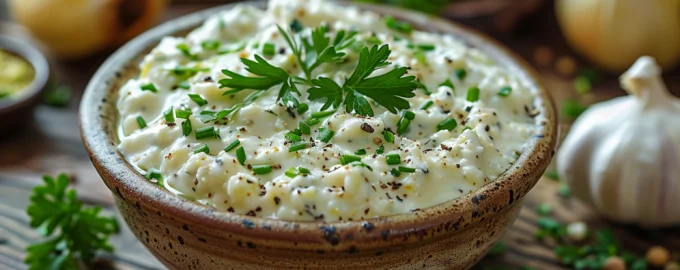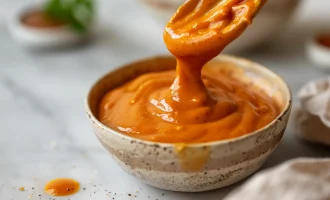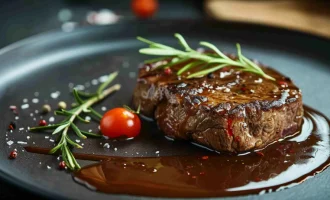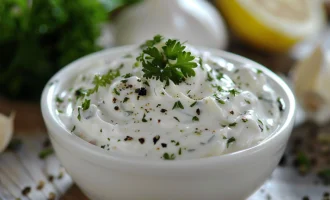Tartar sauce, with its creamy base and tangy, crunchy additions, has been a staple condiment in European and American cuisine for centuries. Its origins are somewhat debated, but many believe it was inspired by the French sauce “tartare,” traditionally served with steak tartare. The name likely references the Tartars of the Mongol Empire, though the connection between them and the sauce is purely nominal. Tartar sauce became particularly popular as an accompaniment for seafood, especially in England and the United States, where it’s often served with fish and chips, fried seafood, and other simple, breaded fish dishes.
- Mayonnaise 240 g
- Pickles 60 g
- Capers 30 g
- Fresh dill 15 g
- Fresh lemon juice 15 ml
- Onion 30 g
- Dijon mustard 15 g
- Salt to taste
- Black pepper to taste
- In a mixing bowl, stir together the mayonnaise, finely chopped pickles, capers, and minced onion until well combined.
- Mix in the fresh dill, lemon juice, and Dijon mustard. Stir until all the ingredients are evenly distributed throughout the sauce.
- Add salt and black pepper to taste. The capers and pickles will already add a salty and tangy profile, so add additional salt cautiously.
- For the flavors to meld together, cover and refrigerate the tartar sauce for at least an hour before serving. This step is crucial for developing the depth of flavor.
Storage Tips
Tartar sauce is best enjoyed fresh but can be stored in an airtight container in the refrigerator for up to a week. The acidity from the lemon juice and the pickles helps preserve the sauce to some extent, but it’s best to consume it within a few days for optimal taste.
Useful Properties of the Main Ingredient
Mayonnaise, the base of tartar sauce, contains eggs and oil, which are sources of healthy fats and vitamins. Eggs are a good source of high-quality protein, vitamin D, and B vitamins, especially B12. While mayonnaise is calorie-dense, it also provides essential nutrients when consumed in moderation.
Interesting Facts
- Tartar sauce’s association with seafood dates back to its popularity in England, where it was served as a side for fish and chips, beginning in the 19th century.
- The addition of capers and pickles to tartar sauce varies by region, with some recipes calling for the inclusion of other ingredients like hard-boiled eggs or olives.
- The sauce’s name, often misspelled as “tartare” sauce, leads to confusion with steak tartare, a completely different dish. The “tartar” in tartar sauce actually refers to its supposed origin among the Tartar people, though this is more myth than fact.
This homemade tartar sauce recipe is a simple yet delightful way to add a zesty and creamy touch to any seafood dish, enhancing the overall flavor and making it a memorable meal. Its ease of preparation and versatility make it a must-try for any home cook looking to bring a classic condiment into their repertoire.







